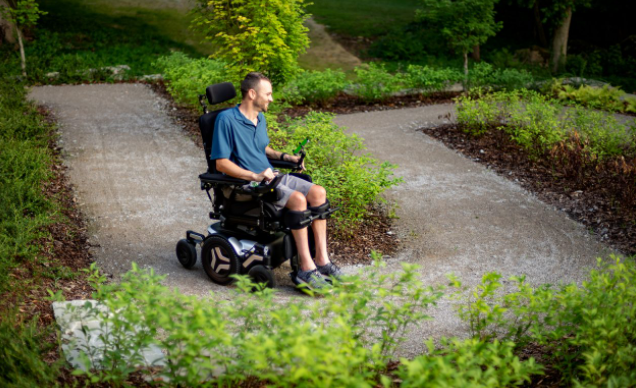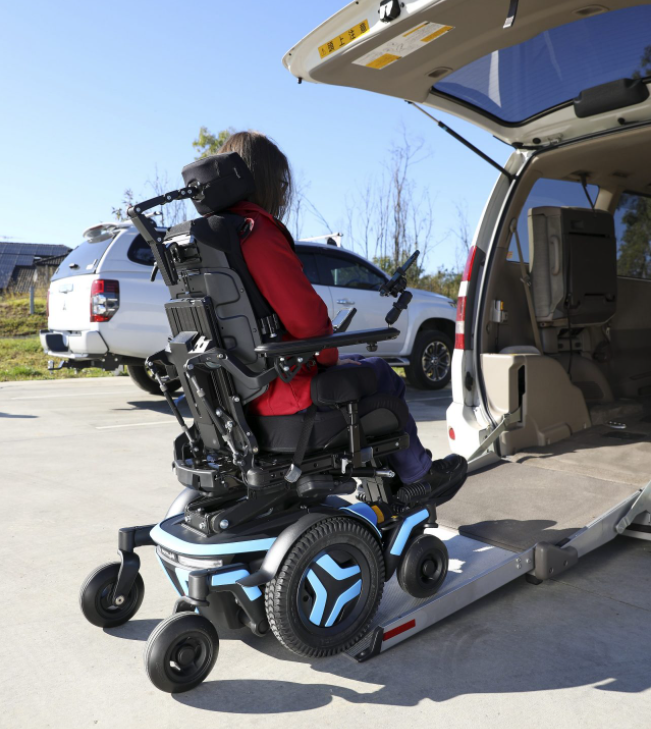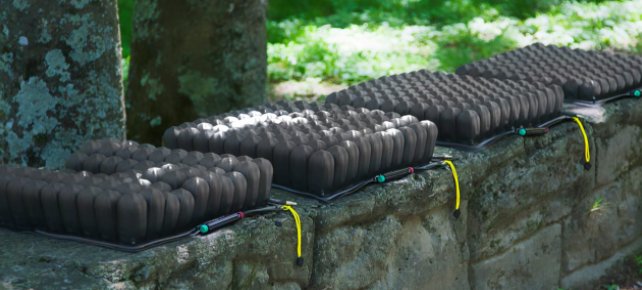Today we will discuss some situations where rental may be a beneficial option to consider. Over the years I have been contacted frequently about renting Assistive Technology (AT) for mobility and seating, from basic entry level through to complex solutions.
Interim Use
Interim use often refers to short term use whilst waiting for your regular equipment to be funded or repaired. In these situations, someone needs something and needs it now, How would you get about your day, complete all the activities and tasks that you need to do if your mobility was suddenly taken away? Could you sustain your daily activities of life? How would you be impacted not being able to go to school, to work, to the supermarket, out to see friends or attend appointments? Whilst there are various funding models, each of these works in slightly different ways and have different processes.
There are also different waiting times within each model and whilst most will offer funding or a means of repairing equipment how can someone continue with their day to day life without access to equipment to support their mobility?
Some disability service providers, hospitals or community groups may have loan pools where members or clients can access various AT for short term use. These vary and often include donated equipment so may have limitations in sizes and features. Whilst they may include equipment that is adjustable, they don’t always have someone available to reconfigure to a user’s specific needs.
This can be a great solution if you can match the users essential short term needs to equipment available however the more specific the users needs the more difficult this can be due to resources and availability of complex equipment. As seating therapists, we are usually striving to fit the equipment to the individual and their needs, rather than fit the individual to the equipment. Let’s consider scenarios where someone may want or need to rent for interim use.

Repairs and Maintenance
Whilst we don’t like to compare a mobility base to a motor vehicle in terms of functional use, when we look at the mobility base independently it also requires ongoing servicing and maintenance and can require mechanical repairs. Just like a car, maintenance may require waits for parts or completion of work to ensure it continues to be reliable and to meets client requirements. The service provider completing repairs and maintenance may have a mobility base that can be borrowed however if the user’s mobility base has certain features or specific configuration, a non-complex loaner may not meet their functional needs.
In this situation a user may want to consider renting a chair that is more specifically suited to their needs. Seat-to-floor height or seat elevate, for example, may be essential for the user to maintain independent transfers, the user then may require additional support not usually required. The impact of not having access to a mobility base that meets their needs is potentially not only affecting their mobility, but on them getting into or out of bed which could additional support and resources.
It is important to have a plan for what happens if the user doesn’t have access to their essential equipment as breakages and mechanical repairs are not always predictable! Do you have a plan for your clients if things go wrong?

Waiting for the Funded Solution
As discussed earlier there are different funding processes and the biggest difference between Australia and New Zealand’s government funding for disability is the order that the process takes when applying for equipment; In Australia an assessment is completed, equipment trialled and then an application is made for funding. Once funding is approved the equipment is ordered and an average of 6-8 weeks later, the equipment is delivered. In New Zealand the assessment takes place and the application to trial specific options is submitted, once approval is given a trial will be set up and there is an opportunity to keep the trial chair if it is successful.
As such the wait times and where the wait times occur do differ. An interim use chair may be required based on the users needs while they await assessment, funding or delivery of new equipment.
Renting equipment can also assist therapists and users identify how certain features or configurations can impact on function and assist in identification of potential solutions to trial. In Australia the trial time is limited to an appointment with the supplier which only provides a small snapshot of the user’s life and function. It may be appropriate to consider options for a longer trial period to fully identify what works and doesn’t work for a user.
We are aware of several users that have rented complex mobility bases before proceeding with funding as they wanted to ensure certain features where used or considered in multiple environments.
Short Term Use
Short term use is when the user doesn’t need their equipment long term, it may be part of rehab or assist someone in getting home from hospital post-surgery. This equipment is usually less complex and if required for hospital discharge is often loaned or rented from the hospital or arranged by the hospital staff. Short term rental is often considered when it is more cost effective than purchasing equipment that won’t be needed in the future.

Short term rental can also be an option when someone is travelling and not wanting or able to take their equipment with them. Travelling and resources may mean that someone takes a manual chair but wants a powered chair to explore and independently access the locations as they would normally at home in their power chair.
Intermittent or Occasional Use
Off road or all terrain chairs and beach chairs are often essential to access certain locations. How frequently will they be used? These chairs will not usually be practical for everyday use, so can be a large cost for occasional use that don’t meet some funders’ criteria. What will be the most cost-effective solution? If someone lives on a farm or rural location, they will potentially be using the equipment daily. But if it’s for an annual holiday to the beach or to the farm, renting may be an option to consider.
How can I rent mobility and seating solutions?
- Funding for rental may be available in some situations, this is best to addresses with your specific funding body
- Talk to your therapist or service provider about potential options
If you want to discuss any essential clinical features and options you feel are essential in an interim or short-term mobility or seating base, contact us at education.au@permobil.com. If you are looking at renting any Permobil products you can find more information on our Rental page.

Tracee-Lee Maginnity
Clinical Services Specialist
Permobil APAC
Tracee-Lee Maginnity joined Permobil Australia in July 2019, as a clinical education specialist. Originally from New Zealand, she graduated Auckland University of Technology with a BHSc (Occupational Therapy) in 2003 and has since worked in various roles related to seating and mobility including assessing, prescribing and educating. After gaining experience as an assessor and prescriber at Seating To Go / Wheelchair Solutions in prescribing for both disability and injury, she moved to Australia in 2011 to take on the Senior Occupational Therapist role in a custom moulded seating service. She then worked in clinical consulting and education roles until joining Permobil.
Tracee-Lee is passionate about maximising functional outcomes with end users and the importance of education within the industry. She has mentored many therapists interested in AT. Her experience includes working with complex postures to achieve custom outcomes. Tracee-Lee is also an international wheelchair rugby classifier where she enjoys the task analysis of wheelchair propulsion and functional capacity identification of athletes.
